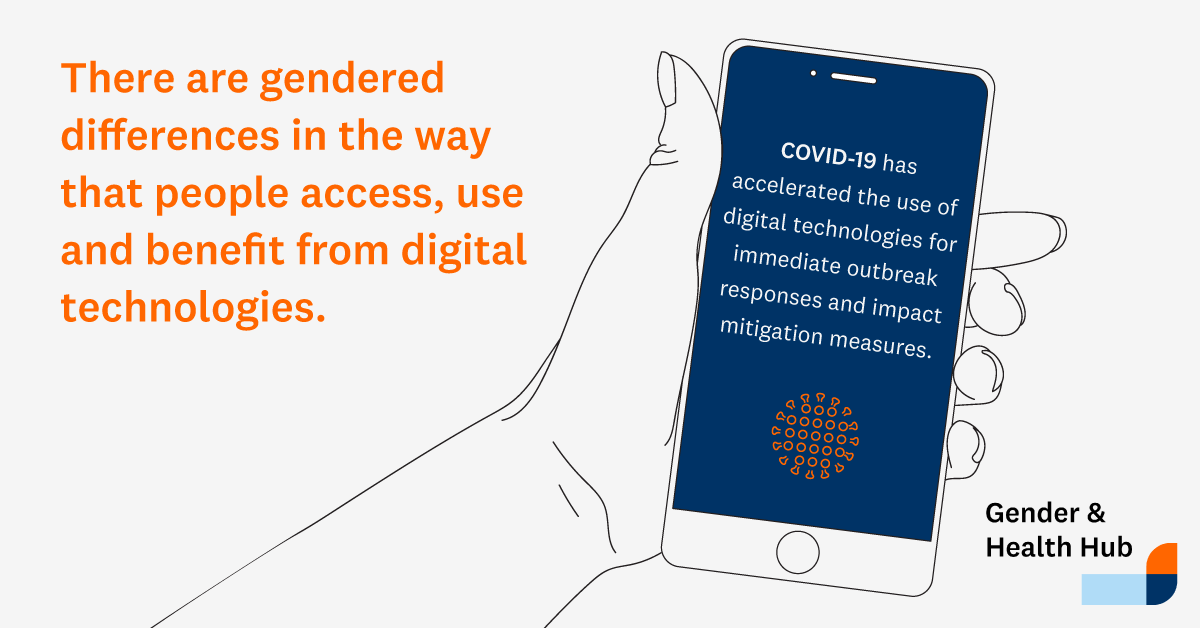- COVID-19 has accelerated the use of digital technologies for immediate outbreak responses and impact mitigation measures
- Relying on digital technologies to mitigate the indirect health effects of the pandemic response can exacerbate existing gender inequities
- Provides recommendations to bridge the gender digital gap
This infographic is part of a series of four infographics focusing on the intersection of gender and Covid-19 and covering the following topics:
- The Gender Gap in Digital Health
- GBV Response Services
- Sexual & Reproductive Health Services
- Financial Protection Services
With a focus on countries in the Global South, this infographic illustrates how the digital gender gap is exacerbating gender inequities in access to essential health services and best practices on how some countries are addressing it.
We must address the structural factors that cause it such as affordability, literacy digital skills and safety/security concerns; utilise design interventions that remove cultural and practical barriers and make technology useful for women; and involve women in the design, development, roll out and management of digital health products and services.


In resource-limited settings, some countries have lowered the costs for devices and data and lifted data caps as part of their COVID response.
When contact tracing apps are mandatory, access, privacy and mobility issues arise.
Telemedicine reduces gendered barriers related to travel restrictions, treatment expenses, and apprehension regarding sexual and reproductive health consultations.
Survivors’ limited or monitored access to technology-enabled support networks must be considered.
300 million fewer women than men use mobile Internet, with the gender gap being widest in South Asia (51%), followed by sub-Saharan Africa (37%) although it has been closing in recent years.





